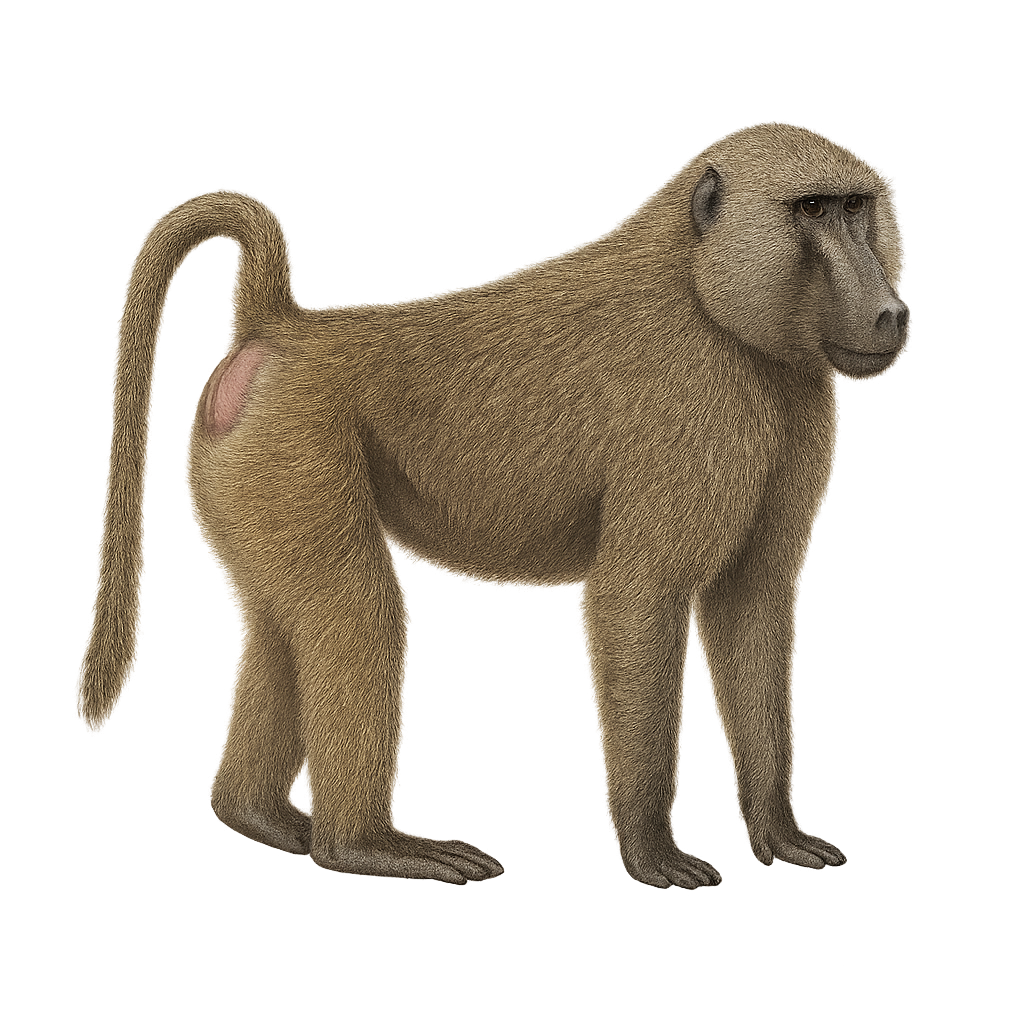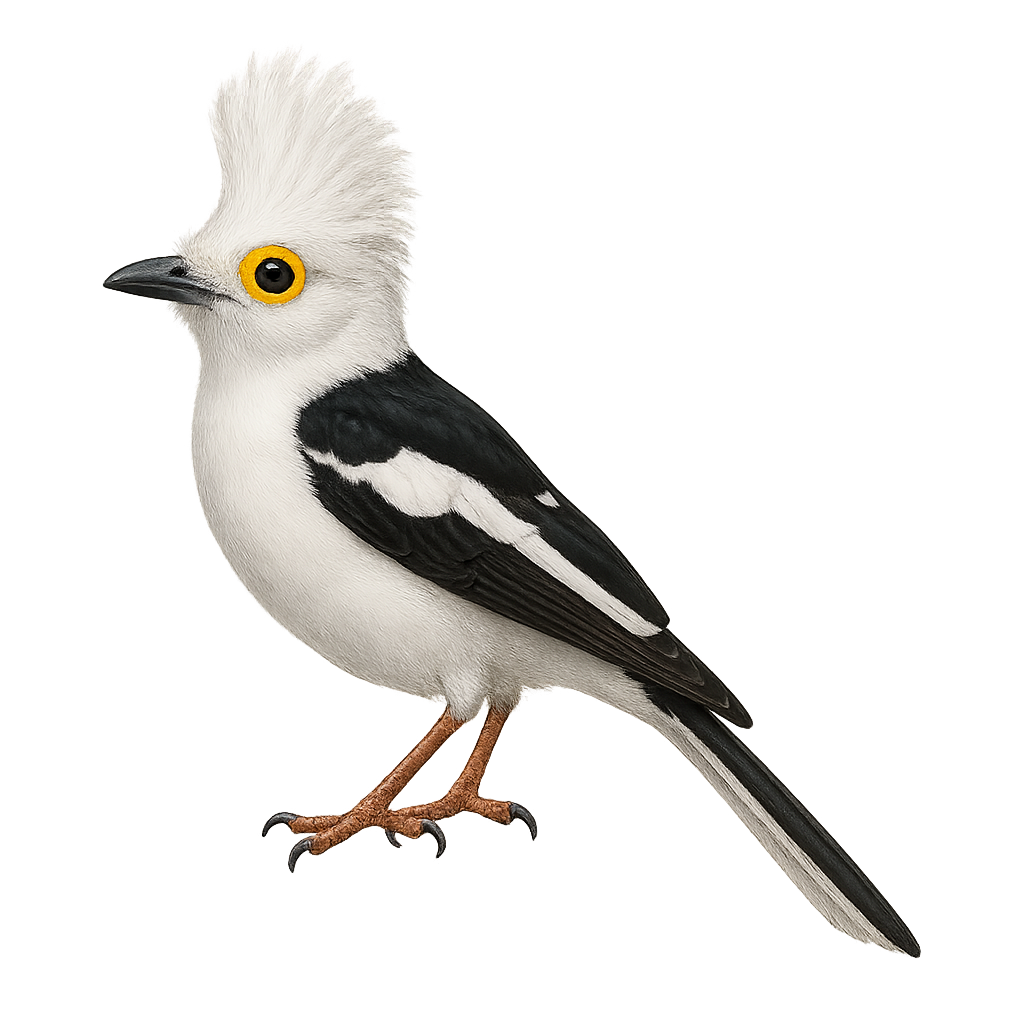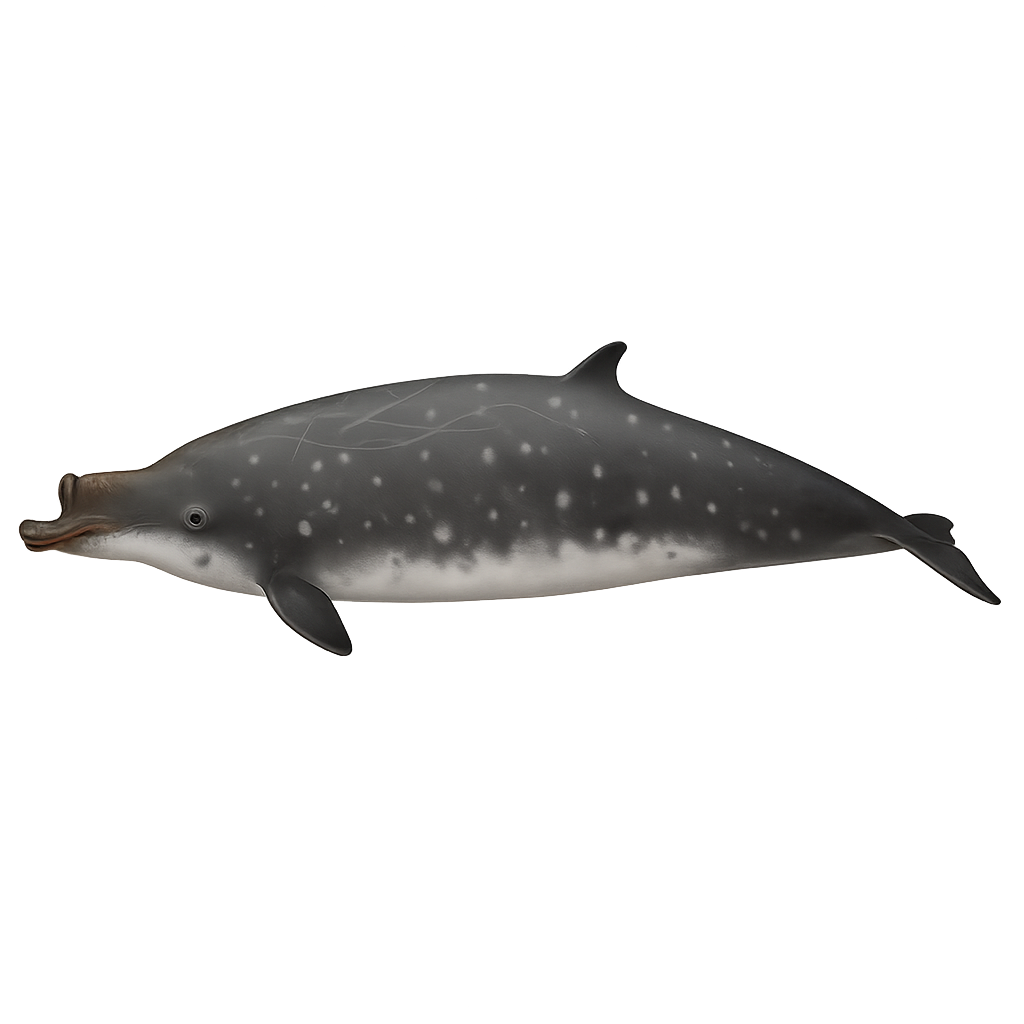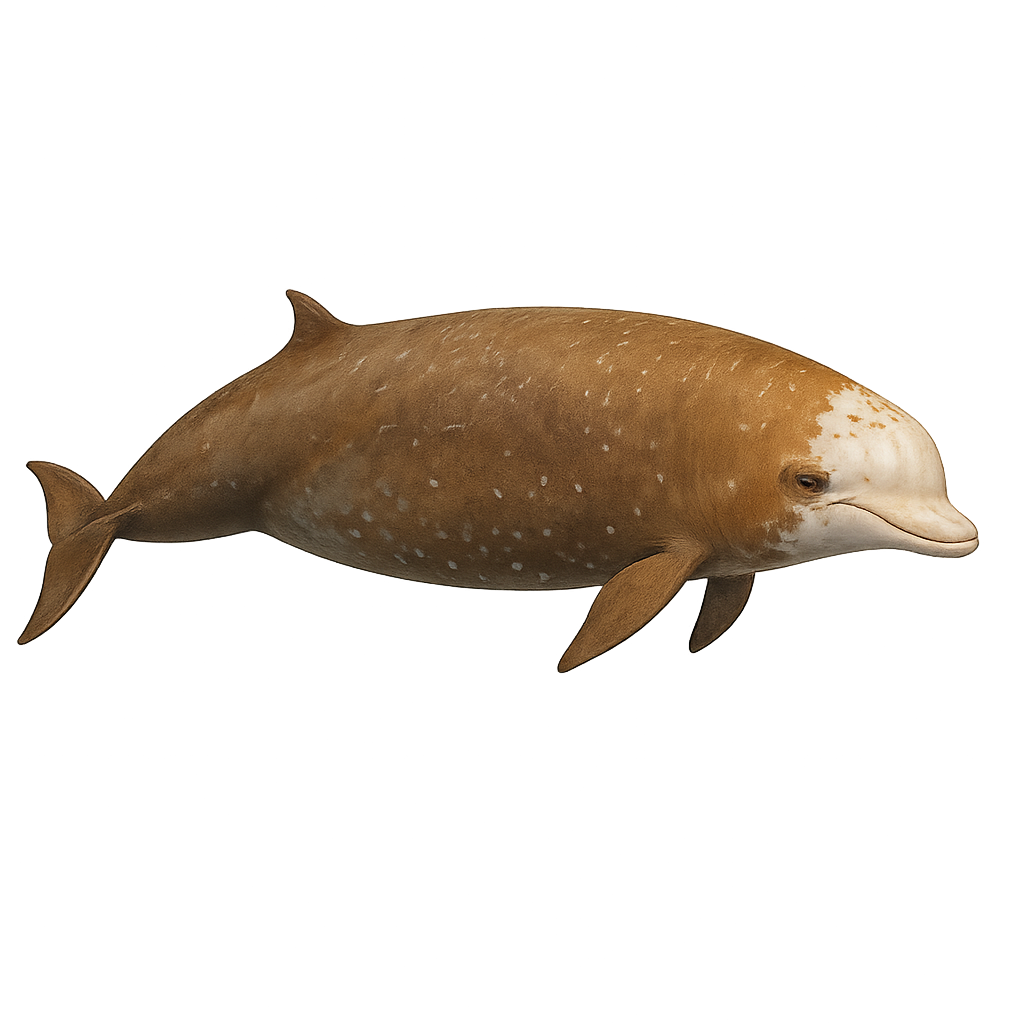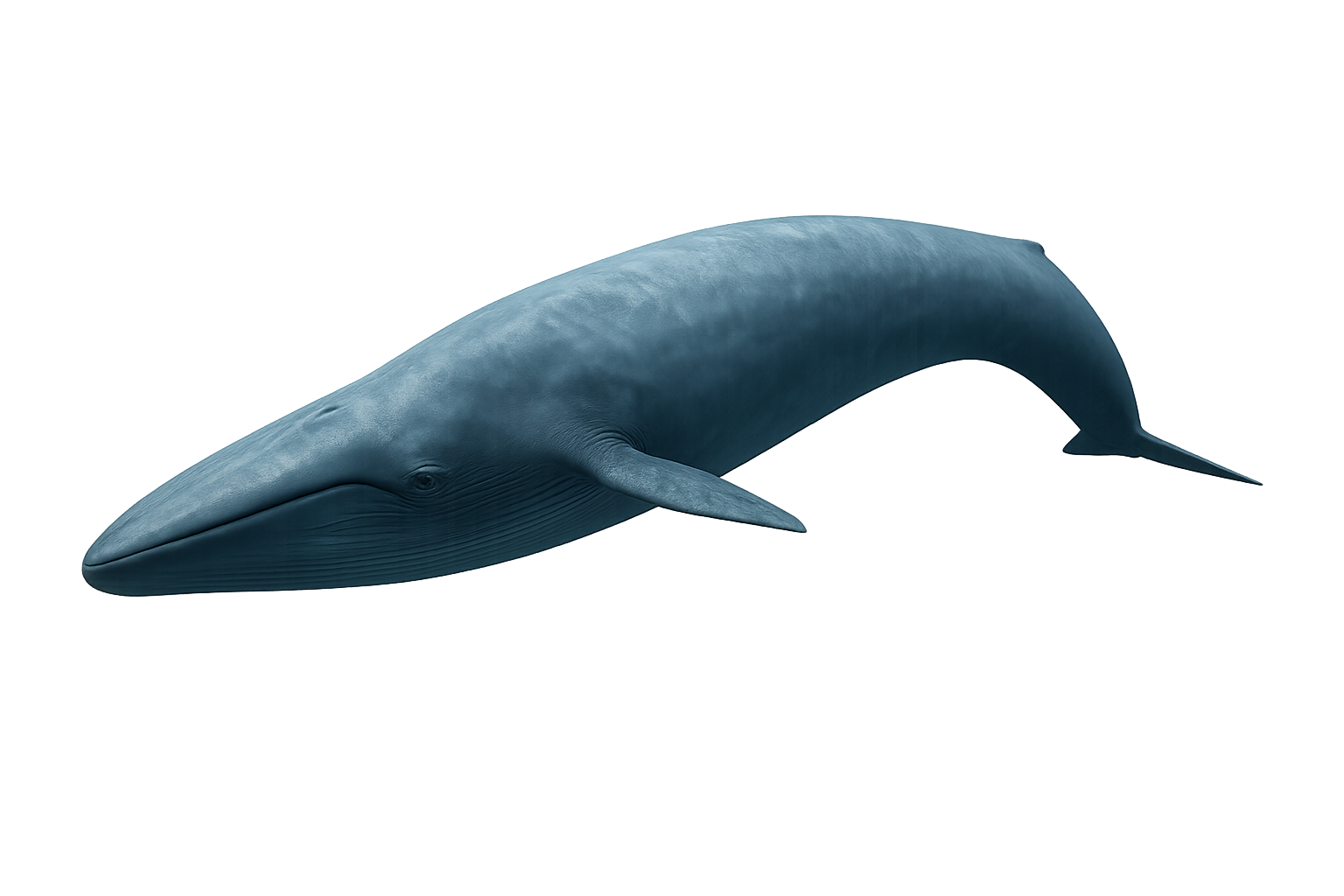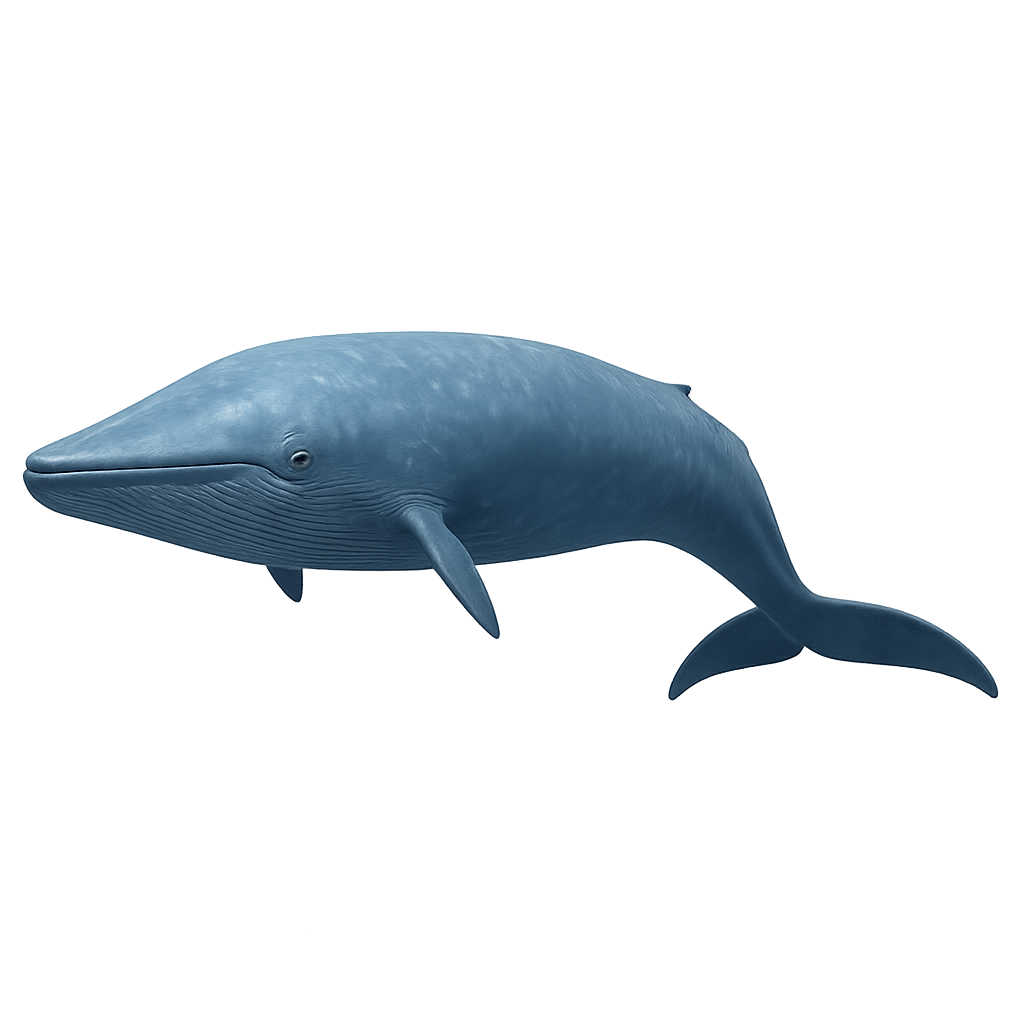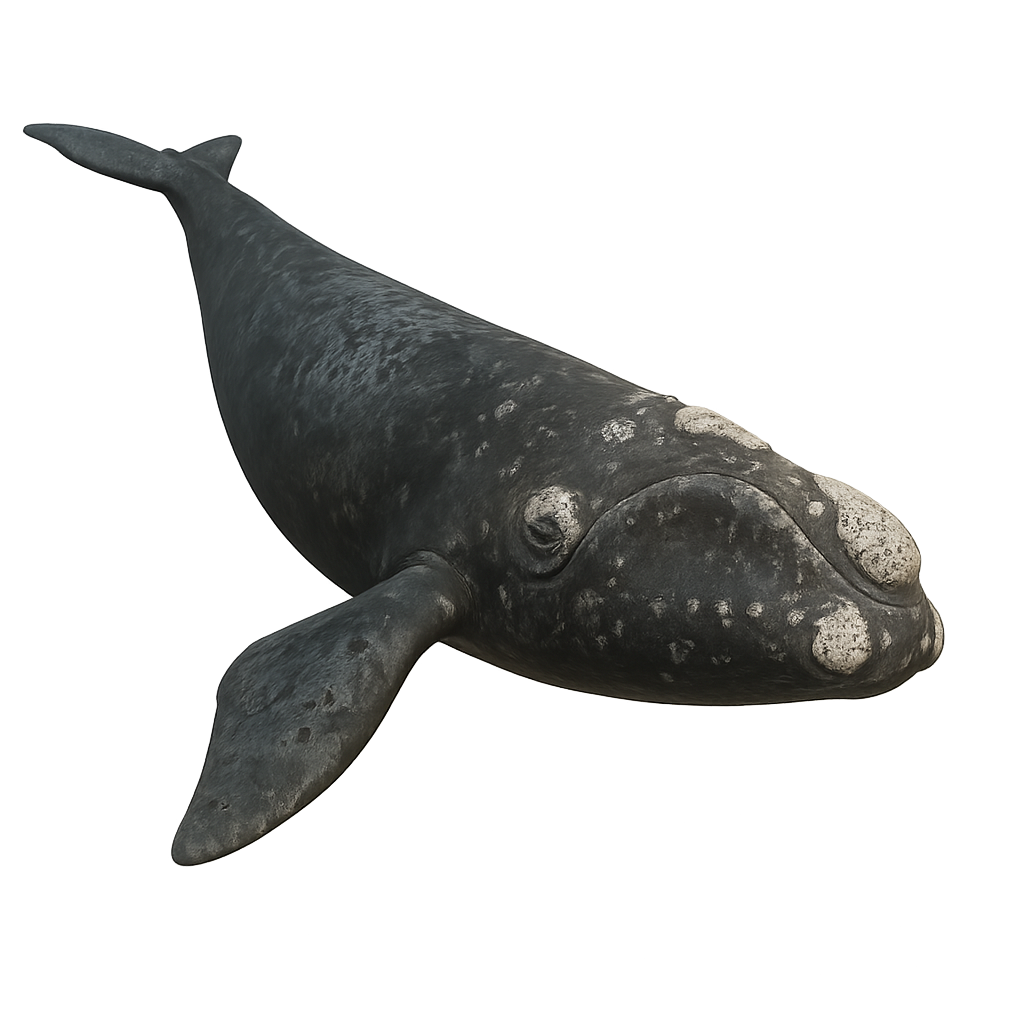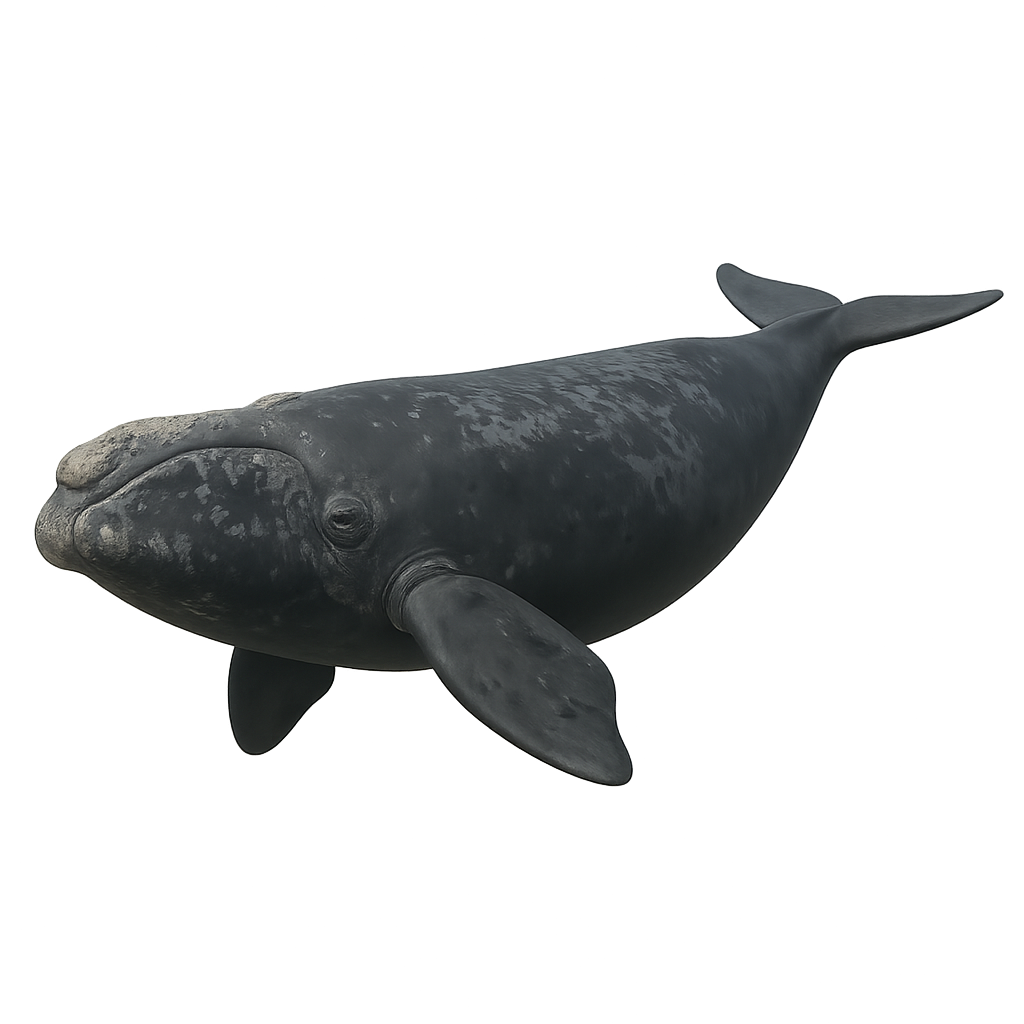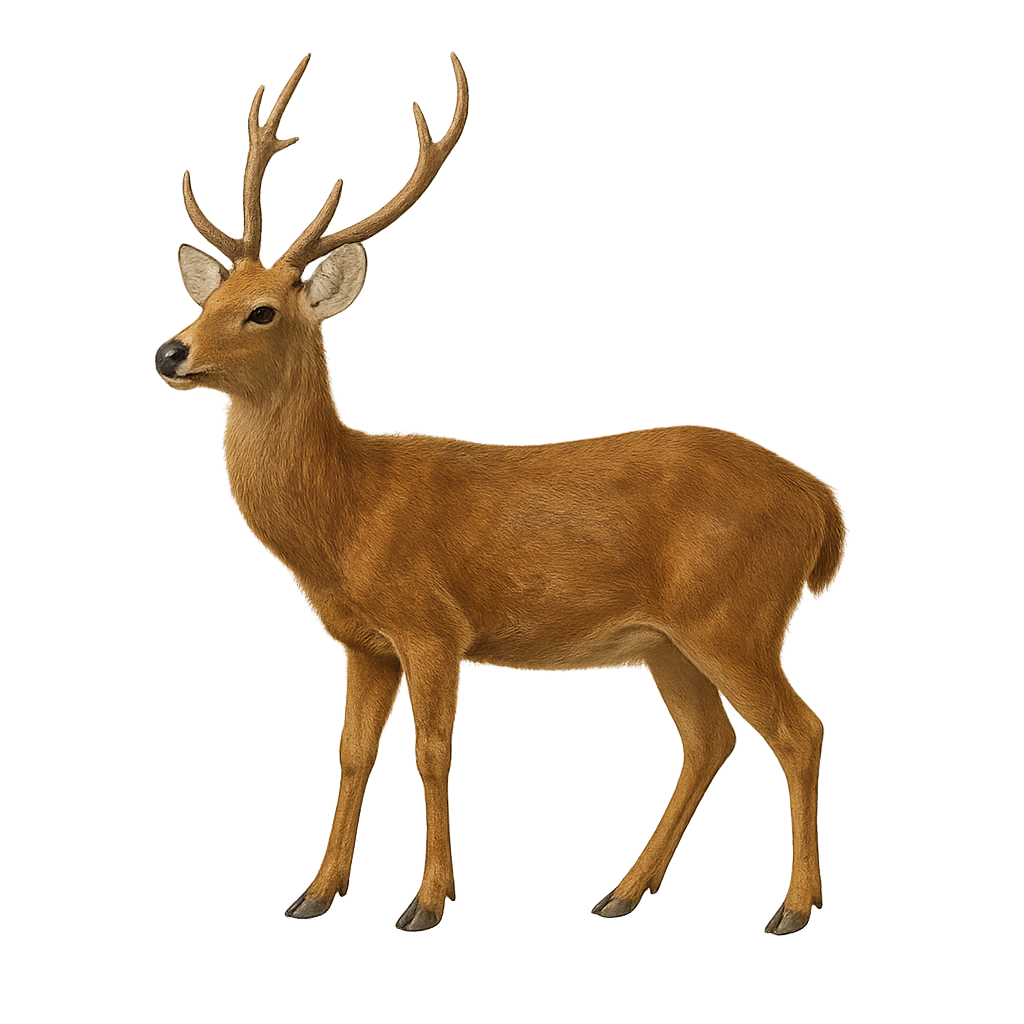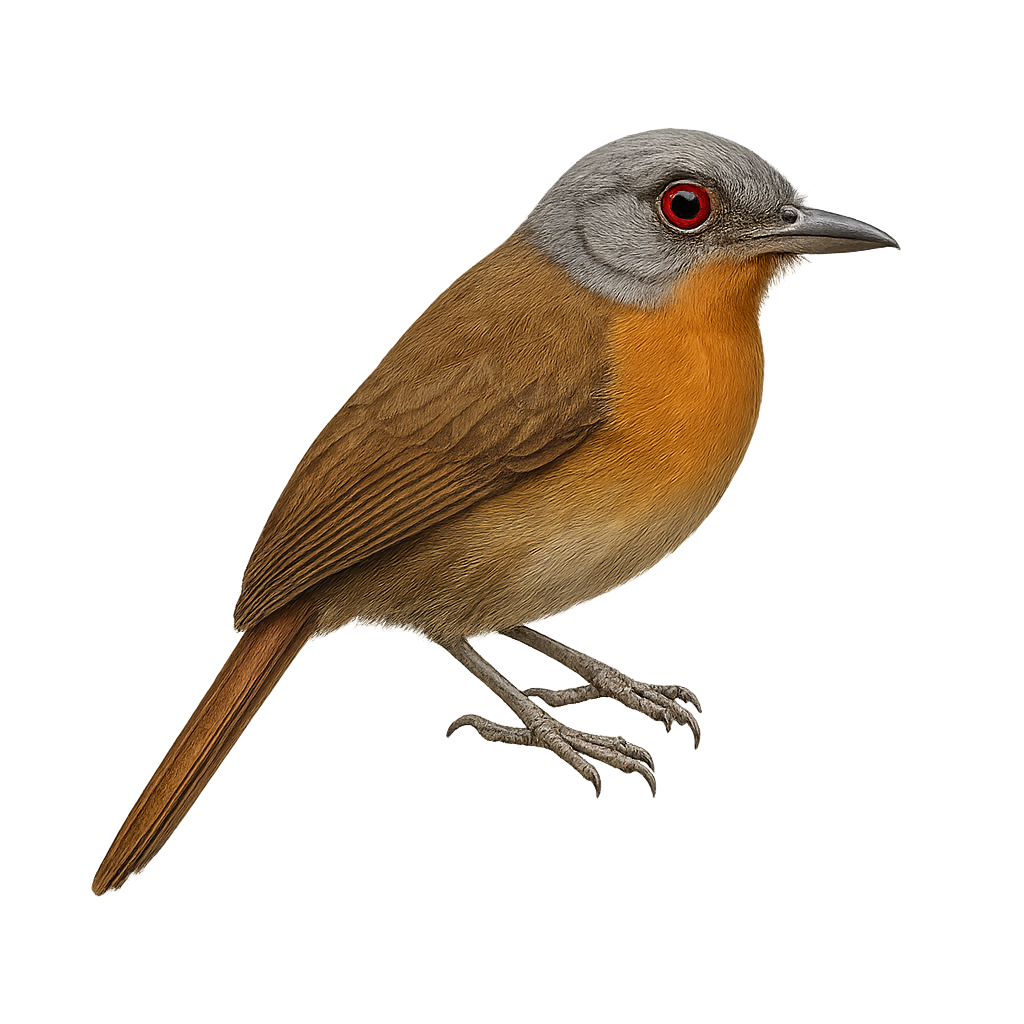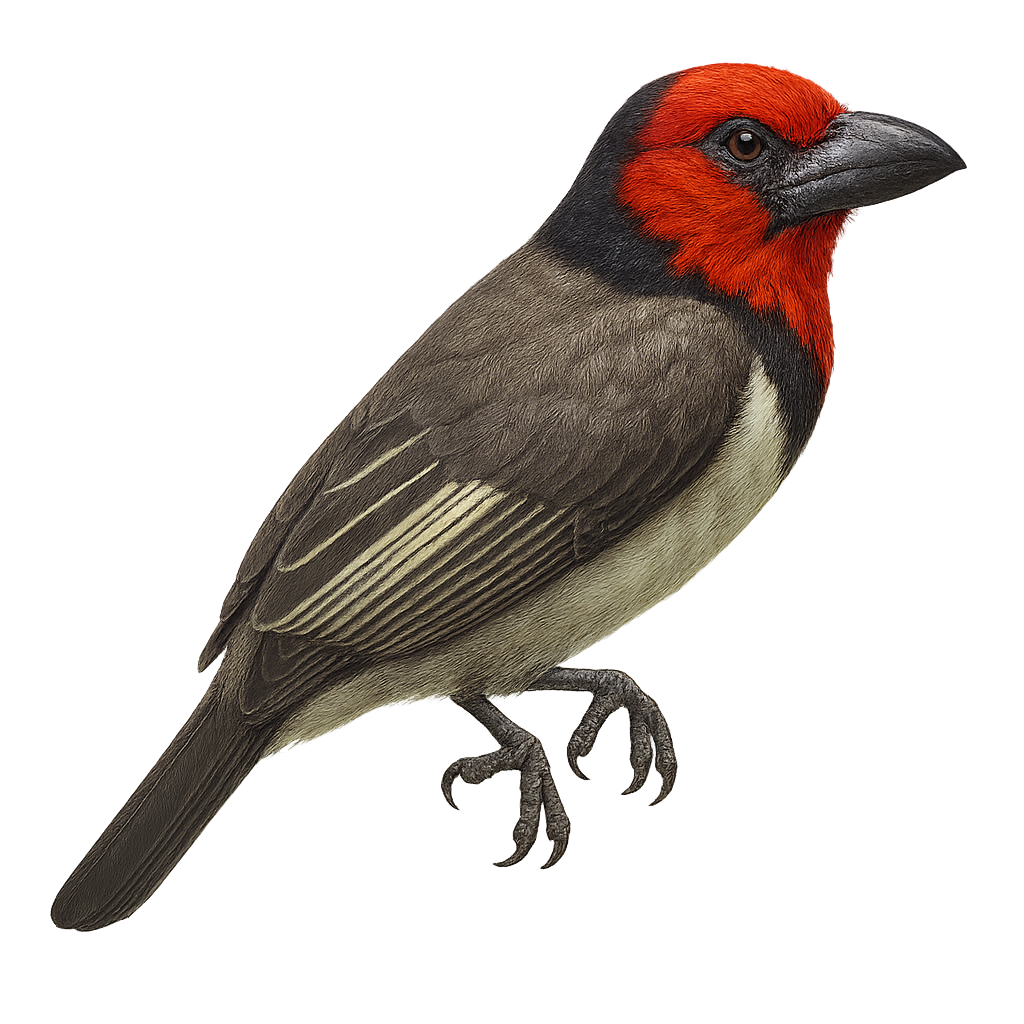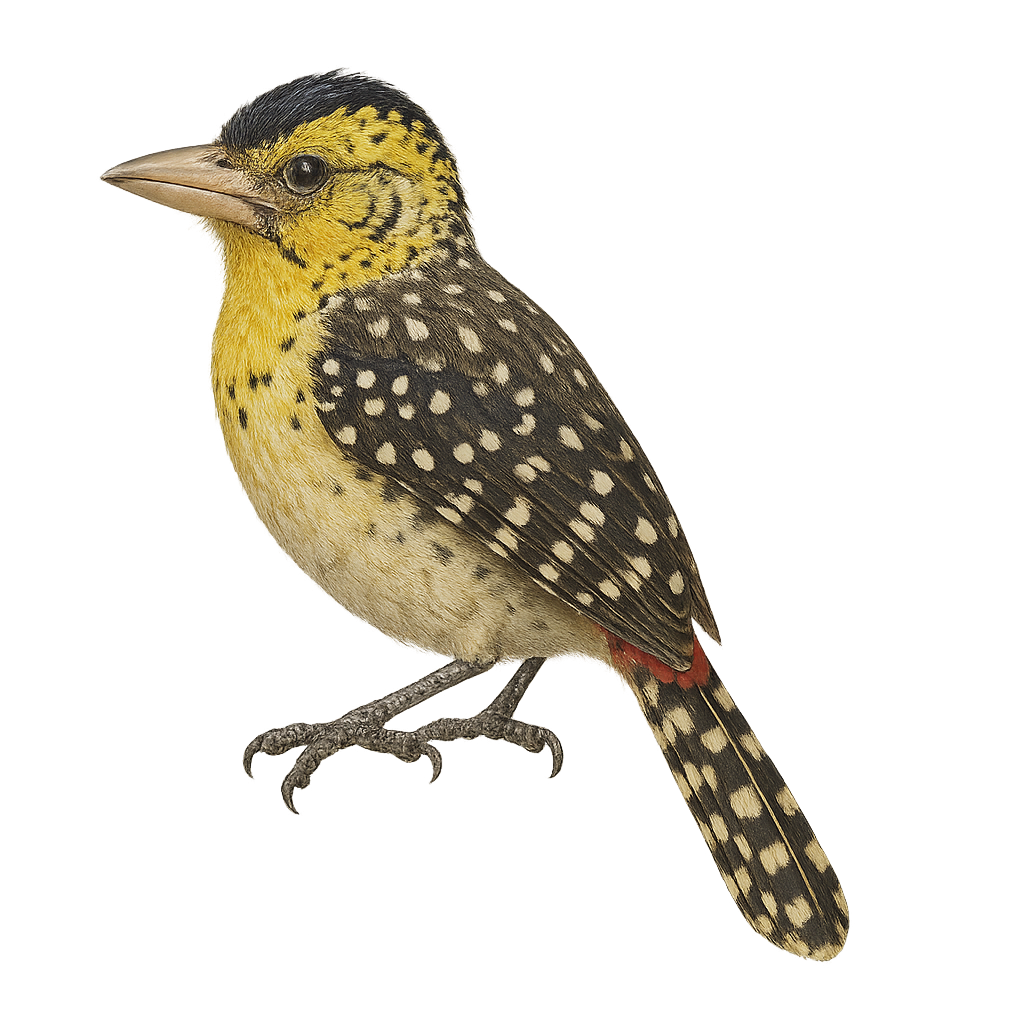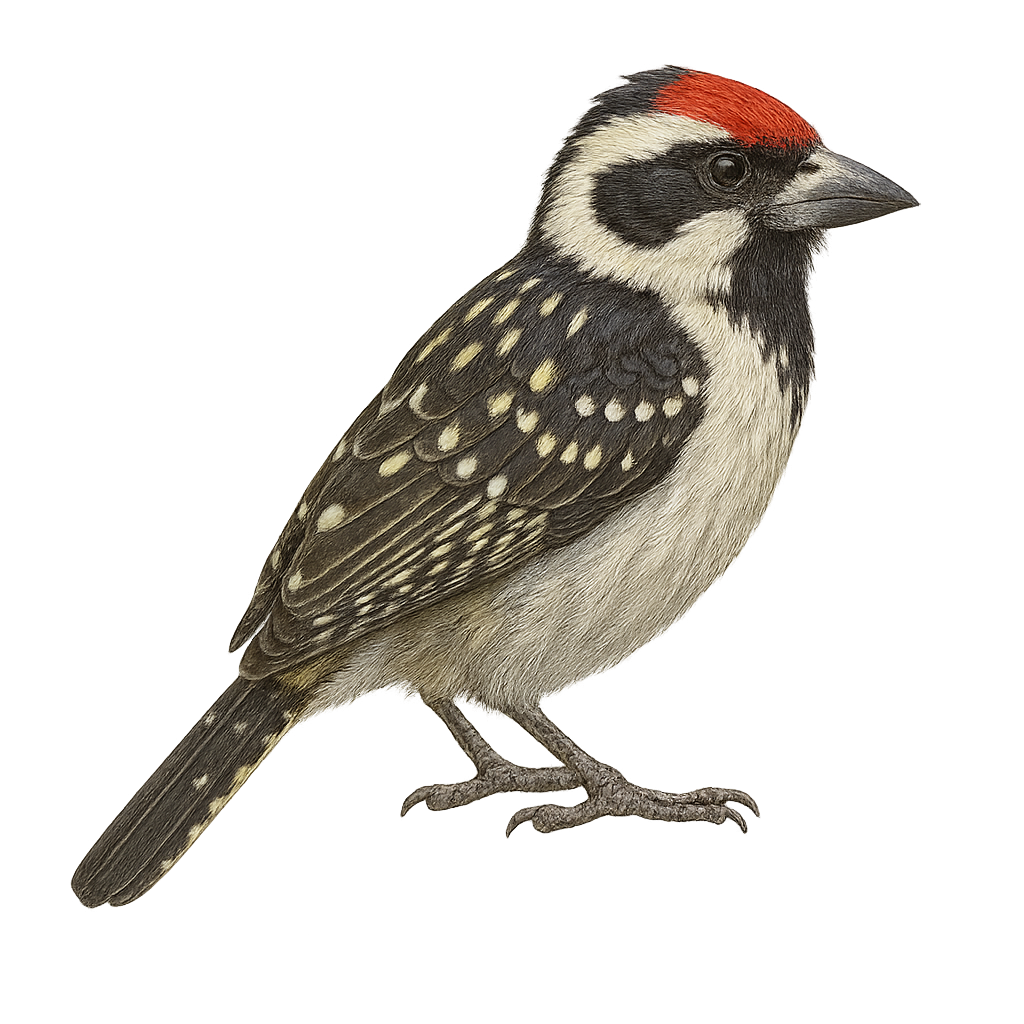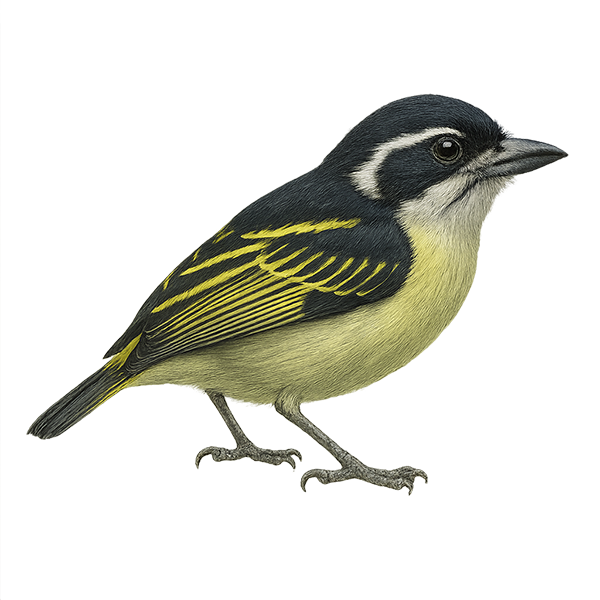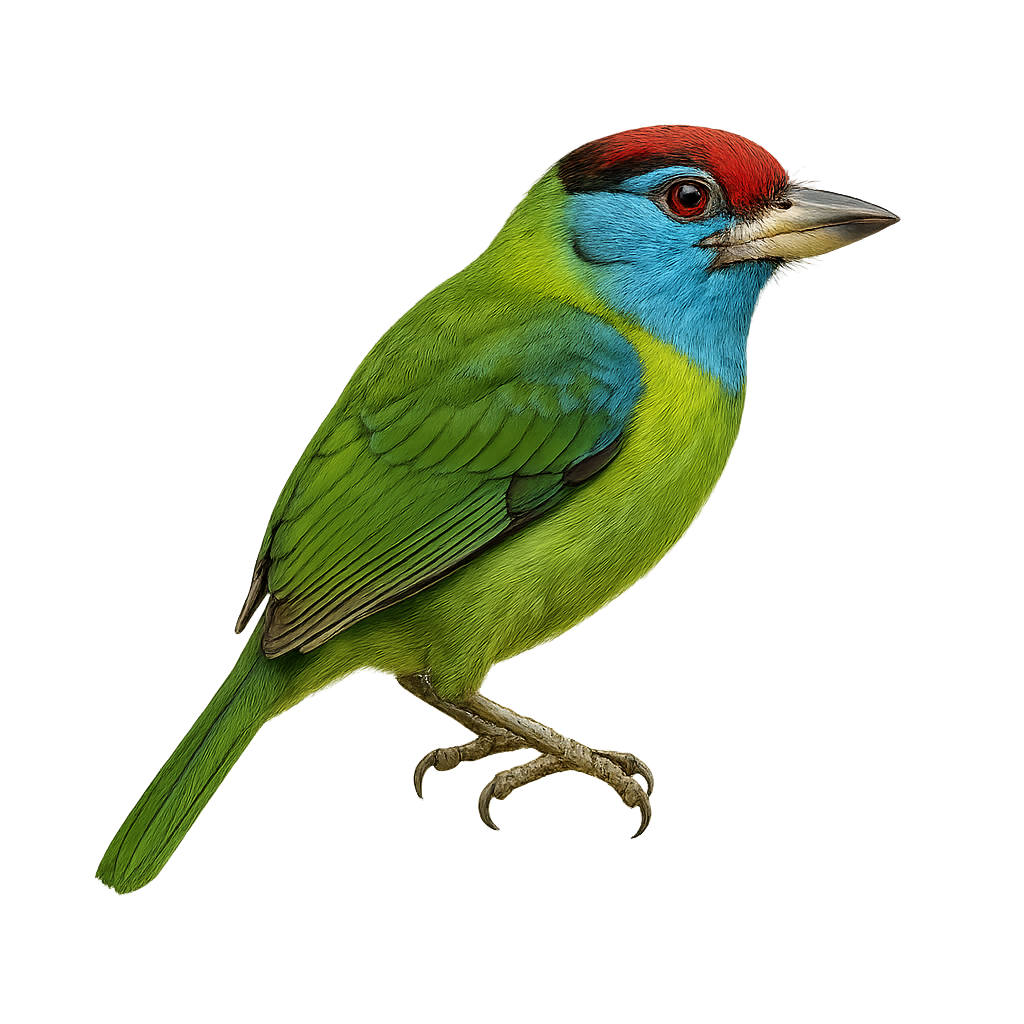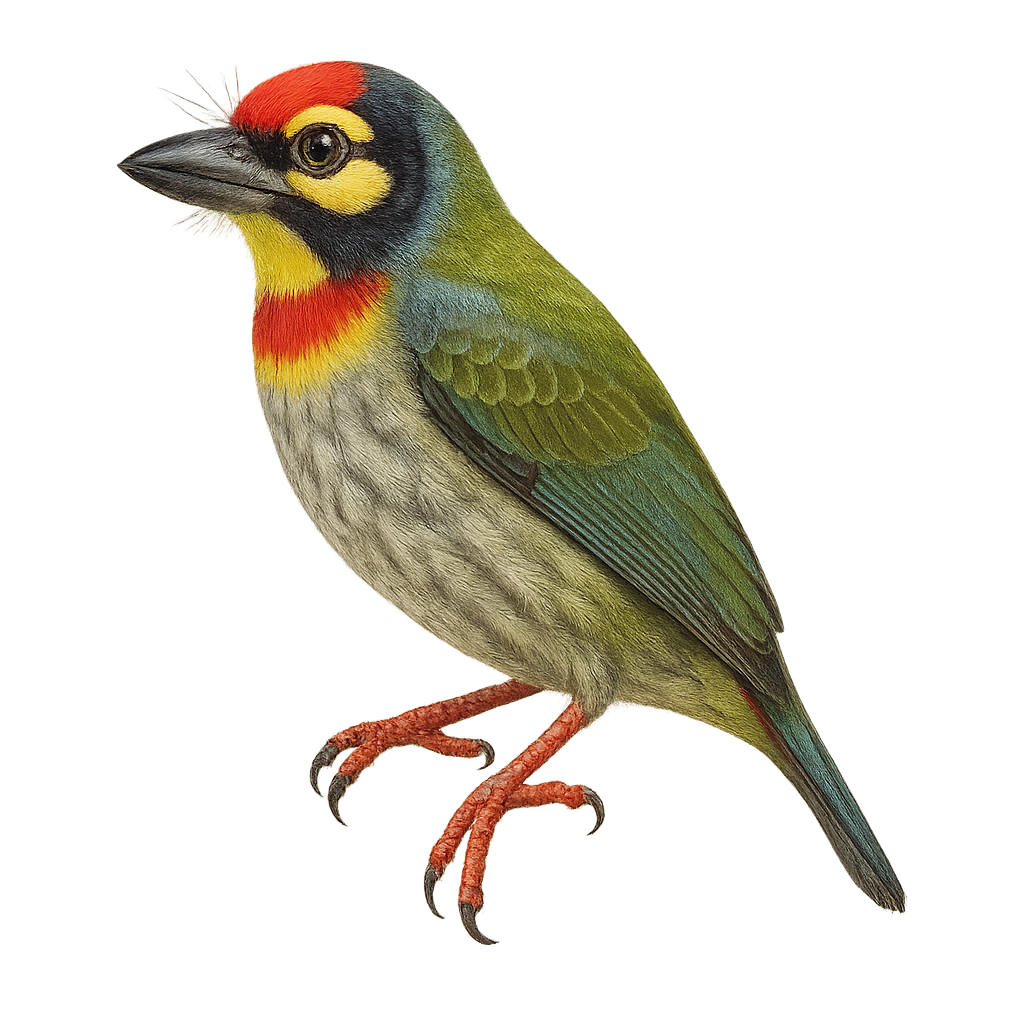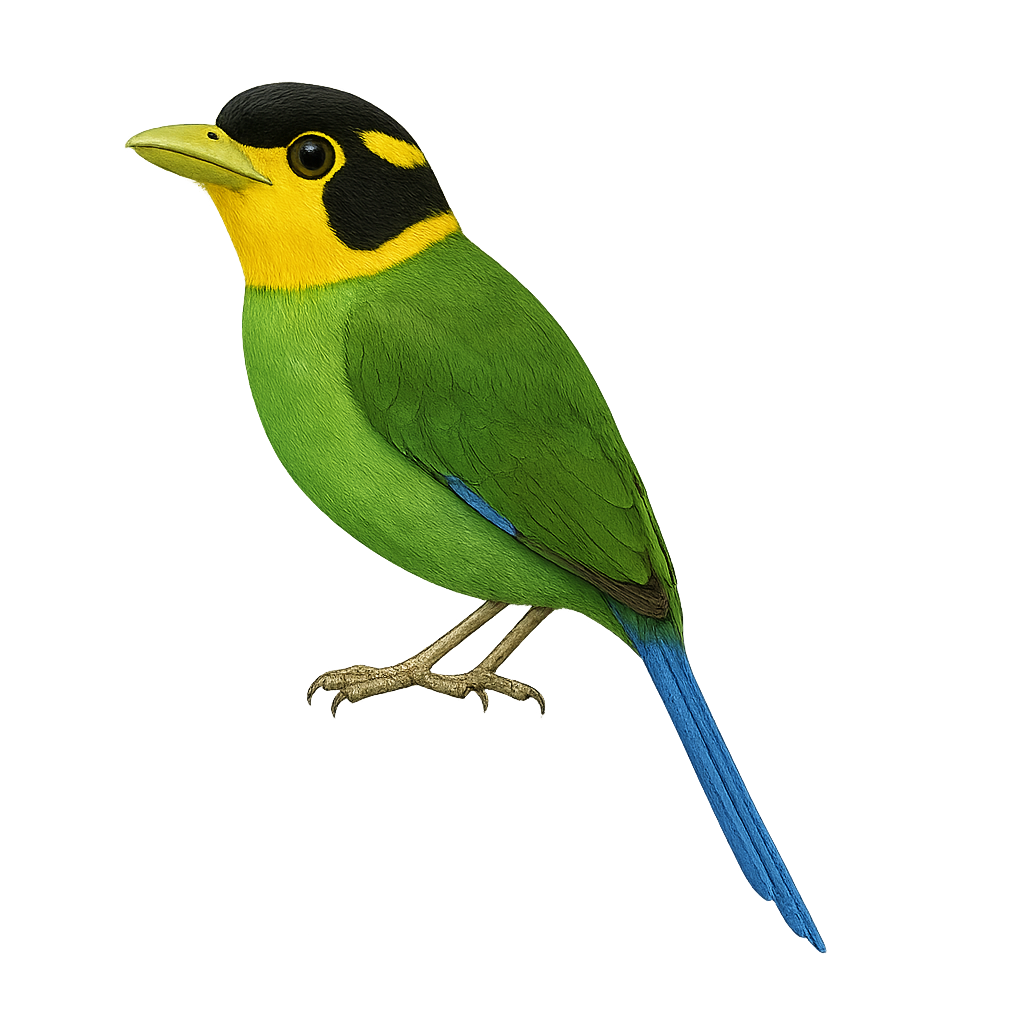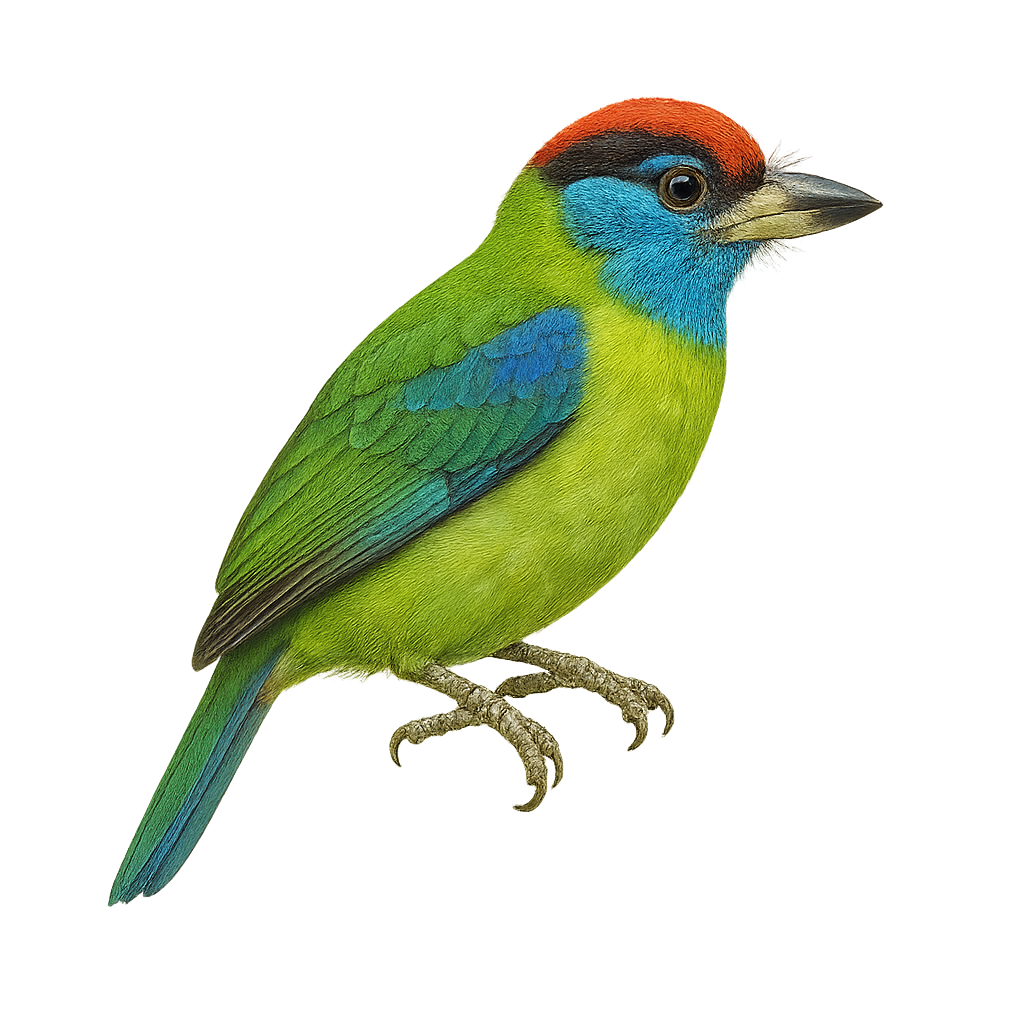The yellow baboon, Papio cynocephalus, is a medium-sized primate known for its yellow-brown coat and elongated face. It primarily inhabits the savannas and open woodlands of East Africa. Yellow baboons are social animals, living in groups that can number up to 200 individuals. They have a complex social structure with well-established hierarchies. Omnivorous, they feed on fruits, seeds, insects, and small vertebrates. Their behavior is marked by great adaptability, allowing them to thrive in various environments. Yellow baboons play a crucial role in their ecosystem, particularly in seed dispersal.
The White Helmetshrike is a fascinating bird, recognizable by its distinctive crest and primarily gray and white plumage. It mainly inhabits the savannas and open forests of sub-Saharan Africa. This sociable bird lives in family groups and is often seen feeding on insects and small invertebrates. Its white crest, which gives it its name, is particularly visible when it is alert or during courtship displays. Although its song is discreet, it frequently communicates with its peers through high-pitched calls. The White Helmetshrike is a resilient bird, capable of adapting to various environments, although it prefers open areas where it can easily spot its prey.
The Baiji, or Yangtze River dolphin, was a freshwater dolphin species once endemic to the Yangtze River in China. Recognizable by its streamlined body and flag-like dorsal fin, the Baiji typically measured between 2 and 2.5 meters in length. Its skin was a pale gray, almost white, earning it the nickname "white dolphin of China." Unfortunately, due to pollution, overfishing, and dam construction, the Baiji is now considered extinct in the wild. Conservation efforts failed to reverse its rapid population decline, making it a symbol of the fragility of freshwater ecosystems.
The Osprey is a remarkable raptor, easily identifiable by its white and brown plumage and keen eyes. This large bird of prey is specialized in fishing, catching fish by diving at high speed from the air. It is mainly found near lakes, rivers, and coastal areas in Europe, Asia, Africa, and the Americas, where it builds large nests on trees or pylons. The Osprey is a solitary bird and an extremely precise hunter, often seen hovering over the water before diving to catch its prey.
Despite its great agility and ability to catch fish, the Osprey is vulnerable to water pollution and habitat destruction. Conservation efforts are underway to protect this iconic species.
Blainville's beaked whale is a little-known species of beaked whale, primarily inhabiting the deep waters of the Atlantic and Pacific Oceans. It is easily recognized by its long, narrow rostrum. This species is difficult to observe due to its deep-ocean habitat and migratory habits. The Blainville's beaked whale is still poorly studied but is threatened by pollution, ship collisions, and underwater noise.
Cuvier's beaked whale, also known as the Cuvier's whale, is a deep-diving cetacean found primarily in tropical and temperate oceans worldwide. It is easily recognized by its elongated head and prominent beak. This cetacean is one of the deepest diving whales, capable of descending more than 2000 meters in search of food. Its diet primarily consists of squid and deep-sea fish. Although it is a difficult animal to observe due to its deep habitat, it is sometimes seen at the surface to breathe. Cuvier's beaked whale is known for its long dives and mysterious behaviors.
The Humpback Whale is one of the most iconic whale species, known for its spectacular jumps and fascinating songs. This massive whale can grow up to 16 meters long and weigh up to 36 tons. It is found in oceans worldwide, migrating between the cold waters of the Arctic and the warmer tropical waters to breed. Humpback whales primarily feed on krill and small fish, which they capture using a group hunting technique known as "bubble netting," where they create bubbles underwater to trap their prey.
In addition to their impressive hunting behaviors, Humpback Whales are also famous for their complex songs, which males use to attract females during the breeding season.
The Blue Whale is the largest animal ever known to have existed on Earth. This impressive cetacean can grow up to 30 meters long and weigh as much as 180 tons. Its gray-blue skin and streamlined body are perfectly adapted to ocean life, and despite its enormous size, the Blue Whale primarily feeds on small marine organisms such as krill, which it consumes in large quantities. Using its massive tongue and enormous mouth, it can swallow up to 4 tons of krill in a single gulp.
Unfortunately, although once abundant, the Blue Whale is now classified as an endangered species due to commercial whaling, which has significantly reduced its population. Conservation efforts are now in place to protect this majestic creature.
Omura’s whale is a small baleen whale measuring 8–12 m in length, with a slender grey body and a slightly asymmetrical head. It inhabits shallow tropical and subtropical waters, feeding mainly on small crustaceans and fish by filtering water through its baleen plates. Usually seen alone or in small groups near the surface.
The Greenland whale is one of the largest baleen whales, with a size that can reach 16 to 18 meters. It lives in the icy waters of the Arctic and primarily feeds on krill and small fish, filtering them through its baleen plates. It is a long-lived animal, with a lifespan that can exceed 200 years. While protected, it is threatened by climate change, pollution, and ship collisions.
The southern right whale is a large baleen whale in the family Balaenidae, measuring 13–18 m in length and weighing up to 80 tonnes. Its robust body lacks a dorsal fin and is covered with white callosities on the head. It inhabits temperate coastal waters of the Southern Hemisphere and feeds on zooplankton by slow-swimming filter feeding. During the breeding season, females give birth to and nurse calves in sheltered bays.
The North Atlantic right whale is a large baleen whale, recognized for its imposing size and rough black skin. This cetacean, once hunted for its oil, is now protected and classified as critically endangered. It primarily lives in the coastal waters of the North Atlantic, from New England to Eastern Canada. Feeding on plankton and krill, it uses its baleen plates to filter food. Due to pollution, underwater noise, and ship collisions, the species remains severely threatened.
The Rucervus duvaucelii, commonly known as the barasingha or swamp deer, is a deer species native to the Indian subcontinent. It is recognizable by its impressive antlers, which can have up to twelve tines, hence its local name meaning "twelve-tined". This deer prefers wet and marshy areas, where it primarily feeds on aquatic grasses. Males are generally larger than females and have a golden-brown coat. The barasingha is a social species, living in herds that can number several dozen individuals. Unfortunately, it is threatened by habitat loss and illegal hunting, leading to a significant decline in its wild populations.
The Lanceolated Monklet, or Micromonacha lanceolata, is a small, elusive bird found in the tropical forests of Central and South America. It is characterized by its dull brown plumage, speckled with lighter patterns that help it blend into its surroundings. Its modest size and discreet behavior make it a challenging bird to spot. It primarily feeds on insects, catching them in flight or foraging on branches. Its song is soft and melodious, often heard at dusk. The Lanceolated Monklet prefers dense, humid forests, where it can hide among the foliage. Although not considered threatened, deforestation poses a potential threat to its natural habitat.
The White-fronted Nunbird is a medium-sized bird, measuring about 20 to 22 cm in length. It is easily recognizable by its dark gray plumage, contrasting with a distinctive white forehead and a bright red bill. This bird primarily inhabits the humid tropical forests of South America, notably in Brazil, Colombia, and Peru. It feeds mainly on insects and small fruits, which it captures in flight or by foraging through foliage. The White-fronted Nunbird is often observed in small family groups, actively moving through the canopy. Although relatively common in its habitat, it remains discreet and can be difficult to spot due to its wary behavior.
The Black-collared Barbet is a colorful bird found mainly in sub-Saharan Africa. It is distinguished by its vibrant plumage, with a bright red head and a characteristic black collar around its neck. This bird measures about 20 cm in length and has a robust beak, adapted to its diet mainly consisting of fruits, insects, and sometimes small vertebrates. It typically inhabits open forests, savannas, and wooded areas. The Black-collared Barbet is known for its distinctive call, often heard before being seen. It is a social bird, often observed in small groups or pairs. Its ability to adapt to various habitats makes it a relatively common species within its range.
The D'Arnaud's Barbet is a colorful and fascinating bird native to the wooded regions and savannas of East Africa. This medium-sized bird, measuring about 20 cm in length, is easily recognizable by its bright plumage, featuring shades of yellow, black, and white, with distinctive red patches on its head and neck. It is often seen in small groups or pairs, feeding mainly on insects, fruits, and seeds. The D'Arnaud's Barbet is known for its melodious and repetitive song, which it uses to mark its territory. Although relatively common in its natural habitat, it is essential to preserve its ecosystems to ensure its long-term survival.
The Black-throated Barbet is a medium-sized bird, approximately 20 cm in length. It is easily recognizable by its black head contrasting with its predominantly white body and black-spotted wings. This bird is endemic to the wooded regions and savannas of southern Africa, where it primarily feeds on fruits, insects, and occasionally small vertebrates. Its song is a rapid, repetitive trill, often heard at dawn. The Black-throated Barbet is a sociable bird, often seen in small groups. Its ability to adapt to various habitats allows it to thrive despite increasing deforestation.
The Yellow-rumped Tinkerbird, Pogoniulus bilineatus, is a small, colorful bird from the Lybiidae family. It is primarily found in the tropical forests of sub-Saharan Africa, distinguished by its olive-green plumage and bright yellow belly. This tinkerbird is recognizable by its two distinct white bands on the head. It primarily feeds on fruits, but also catches insects with agility. Its song is a rapid, repetitive trill, often heard in the canopy. Although generally solitary, it can be seen in small family groups. Its ability to adapt to various habitats, including gardens and plantations, makes it a relatively common bird within its range.
The Blue-throated Barbet, Psilopogon asiaticus, is a colorful and fascinating bird belonging to the Megalaimidae family. It is easily recognizable by its green head, bright blue throat, and robust beak. This bird primarily inhabits the tropical and subtropical forests of Southeast Asia, where it feeds on fruits, berries, and occasionally insects. It is often seen perched on tree branches, emitting distinctive calls that resonate through the canopy. Although relatively tolerant of human presence, it prefers dense wooded areas where it can hide from predators. Its breeding season varies by region, but it is generally observed nesting in tree cavities.
The Psilopogon haemacephalus, commonly known as the Coppersmith Barbet, is a small, colorful bird from the Megalaimidae family. It is easily recognized by its bright red head, yellow belly, and green wings. This barbet is often found in the tropical and subtropical forests of South and Southeast Asia. It is famous for its repetitive call that resembles the sound of a hammer striking metal, hence its English name "Coppersmith". These birds are primarily frugivorous but also consume insects. They nest in tree cavities, which they excavate with their strong beaks. Although generally solitary, they can be seen in small family groups.
The Long-tailed Broadbill, or Psarisomus dalhousiae, is a fascinating bird known for its colorful plumage and long tail. It features a striking blue head, contrasting with its bright green back and yellow belly. This bird primarily inhabits the humid tropical forests of Southeast Asia, including India, Nepal, Thailand, and Malaysia. It is often seen in small groups, moving through the canopy in search of insects and fruits. The Long-tailed Broadbill is a diurnal bird, most active in the morning and late afternoon. Although generally not very shy, it can be suspicious when faced with potential threats. Its ability to blend into the dense foliage of its habitat sometimes makes it difficult to spot.
The Brown-headed Barbet, Psilopogon zeylanicus, is a medium-sized bird known for its brown head and bright yellow forehead. It primarily inhabits tropical and subtropical forests, as well as open wooded areas in the Indian subcontinent. Its olive-green plumage blends seamlessly into the dense foliage, making it difficult to spot. It feeds mainly on fruits but also consumes insects. Its call is a distinctive feature, often heard before being seen. This barbet plays a crucial role in seed dispersal, aiding forest regeneration.
The Golden-throated Barbet, or Psilopogon franklinii, is a colorful bird from the Megalaimidae family. It is recognized by its vibrant green plumage, golden throat, and sturdy beak. This bird is primarily arboreal, feeding on fruits, insects, and occasionally small vertebrates. It inhabits the tropical and subtropical forests of Southeast Asia, particularly in mountainous regions. Its call is distinctive, often heard before the bird is seen. The Golden-throated Barbet is territorial, usually observed alone or in pairs. Although relatively common in its natural habitat, it is rarely seen outside dense forests.
The Great Barbet, or Megalaima virens, is a colorful bird from the Megalaimidae family. It is primarily found in the tropical and subtropical forests of South and Southeast Asia, particularly in the mountainous regions of the Himalayas. This bird is distinguished by its bright green plumage, blue head, and red throat. It measures about 30 cm in length and has a robust beak adapted to its diet, which mainly consists of fruits but also includes insects. The Great Barbet is a diurnal bird, often seen alone or in small groups. It is known for its loud and repetitive call that echoes through the canopy. Although its habitat is threatened by deforestation, it is currently classified as of least concern by the IUCN.
The Lineated Barbet, or Psilopogon lineatus, is a colorful bird from the Megalaimidae family, recognizable by its bright green plumage and distinctive facial stripes. It primarily inhabits the tropical and subtropical forests of Southeast Asia, notably in India, Bangladesh, and Thailand. This bird measures about 27 cm in length and feeds mainly on fruits, berries, and insects. Its song is a characteristic feature of its behavior, often heard in the dense forests where it resides. The Lineated Barbet is a diurnal bird, most active in the morning and late afternoon. It is known for excavating tree cavities for nesting, using its strong beak for this task.
The Black-tailed Godwit is an elegant wader, easily recognizable by its long, slightly curved bill and long legs. It primarily inhabits wetlands and estuaries in Europe, Asia, and North Africa, where it feeds on aquatic invertebrates, worms, and insects, which it detects in the soft sediments along the shores. The Black-tailed Godwit is also known for its long migration, covering great distances between its breeding grounds in temperate regions and its wintering sites in warmer areas.
During the breeding season, males perform spectacular courtship displays, flying gracefully and emitting distinctive calls to attract females.
The Hudsonian Godwit, Limosa haemastica, is a medium-sized migratory bird belonging to the family Scolopacidae. It is recognizable by its long, slightly curved bill and its brownish plumage with shades of gray and rufous. During the breeding season, males display more vibrant colors. This bird primarily inhabits wetlands, marshes, and muddy shores. Its migration is impressive, covering long distances between its breeding grounds in North America and its wintering grounds in South America. The Hudsonian Godwit feeds mainly on small invertebrates found in the mud. Although its conservation status is concerning, it remains a fascinating sight for birdwatchers.
The Marbled Godwit is a large shorebird known for its long, slightly upturned bill and mottled brown plumage. It primarily inhabits wetlands and flooded grasslands in North America. During the breeding season, it migrates to the prairies of central Canada and the United States. It feeds mainly on insects, crustaceans, and worms found in the mud. Outside the breeding season, it migrates to the southern coasts of the United States and Central America. This species is noted for its graceful flights and melodious calls. Although its population is stable, it is sensitive to habitat destruction.
The Bar-tailed Godwit is a remarkable wader, easily recognized by its distinctive plumage, which varies from reddish-brown to gray and white, and its long, slightly downward-curved bill. It primarily inhabits coastal areas and wetlands in Europe and Asia, where it feeds on small marine invertebrates, mollusks, and insects, which it detects in the sediment. The Bar-tailed Godwit is a migratory bird, covering great distances between its breeding grounds in the Arctic regions and its wintering areas in more temperate zones.
During the breeding season, the Bar-tailed Godwit engages in particularly interesting nesting behavior, establishing nests on the ground in grasses or boggy areas.


